11 Types of Sprinkler Heads for the Right Water Coverage
Author: Chris Miller | Editor: Omar Alonso
Review & Research: Jen Worst & Chris Miller
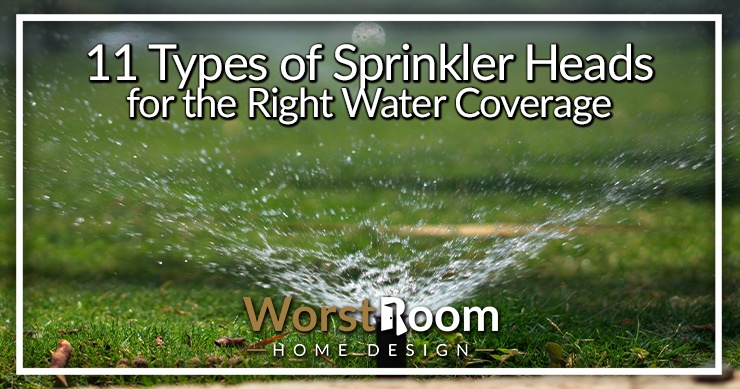
Depending on what you want to achieve, there's the right types of sprinkler heads to use and the wrong sprinkler head types. We're here to remove the mystery and guide you down the right path.
Whether you just want to run through the spray and relive the glorious summer days of your childhood, get your backyard oasis to bloom, or want to keep your building protected against fires, sprinklers are definitely an asset to have around.
Of course, the defining part of your sprinkler system is the sprinkler head. This component defines what kind of spray you receive, making each sprinkler head suited to a different purpose—irrigation or fire protection.
If you’re considering purchasing a sprinkler head for your sprinkler system or are just curious about the options out there, here’s a breakdown of the different types of sprinkler heads available.
11 Types of Sprinkler Heads
As mentioned earlier, sprinkler heads are divided into two categories based on their purpose—as fire protection or for irrigation. Here’s a look at the sprinkler heads in both categories.
Sprinkler Heads for Irrigation
Sprinkler heads have become a staple for irrigation, whether it’s a farmer’s fields of produce, just personal backyards, or as alternatives to underground sprinkler systems. Here are a few of the most commonly used sprinkler heads for irrigation.
Pop-Up Sprinklers
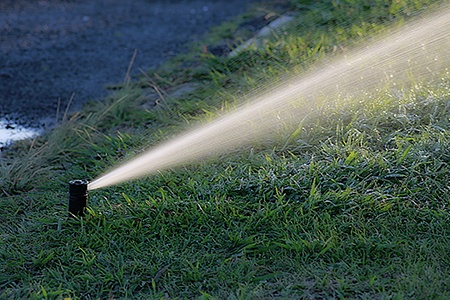
Pop-up sprinklers are the pendant types of sprinkler heads of the irrigation world—they’re the most commonly used sprinklers for irrigation.
These sprinklers are used in in-ground irrigation systems in both commercial and residential settings. The body can be placed completely in the ground; it pops up on activation.
The popping up is a super-convenient feature as it doesn’t catch you unawares, leading to your face meeting the ground in a not-very-nice manner.
It also leaves your backyard looking neat and clean when you’re not using the sprinkler, without any unwanted obstructions sticking out of the ground unnecessarily.
This also translates into the sprinkler head lasting longer as it’s protected from damage induced by the weather conditions, lawnmower, or other activities, when not in use.
Pop-up sprinkler heads generally range from 2 to 20 inches with the water reaching between 3 and 15 feet. You can, of course, adjust the sprinkler head to suit the area you're watering (so you aren't spraying buildings or watering your neighbor's lawn).
The pop-up sprinkler head types that reach a height of four inches when activated are great for grassy areas and lawns, where blades are generally around 3 inches. The sprinkler head has just enough height to reach over the grass and spray them.
Pop-up sprinklers that are six inches are great for turfs and zones, with enough height and reach to clear the entire grass, even if the lawn grows a little longer.
Sprinkler heads that are taller than this are designed to clear bigger obstacles such as shrubs, plants and foliage, making them ideal for areas with rock structures, elevated types of planters, high-reaching plants and tall decorative grasses or any types of hedges.
Pop-up sprinklers are excellent choices for rocky soil or soil that’s hard to dig through.
Fixed Spray Heads
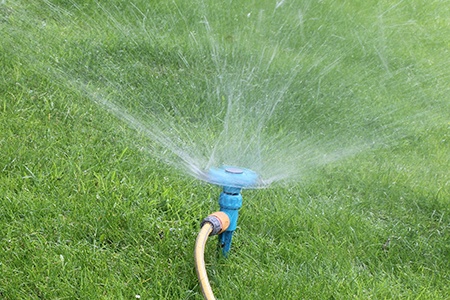
These tiny types of sprinkler heads give you a fan-shaped water spray, much like a shower nozzle.
However, with interchangeable nozzles that you can install on the sprinkler, you can have a range of water-spray patterns of different radii (there are specific patterns that are designed for narrow, long areas).
The spray heads on such sprinkler systems are spaced about 18 feet apart and they require about 20-30 psi of water pressure for operating efficiently.
Rotor Heads
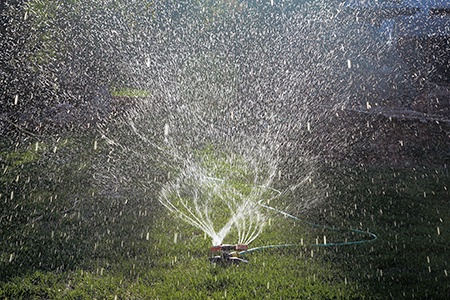
Rotor heads is actually a blanket term that refers to sprinklers that rotate streams of water in circles over the ground. Rainbirds or impact sprinklers are among the most common, distinguishable by the sound it makes on operating.
There are many rotor types of sprinkler heads, as mentioned earlier—apart from impact rotors, there are gear-driven rotors and multi-stream rotors are the most popular.
The former is quieter, smaller and easier to maintain than impact rotors, with one or more streams of water. The latter, as the name implies, has multiple water streams, with sprinkler heads anywhere between 8 and 65 feet apart.
The more the distance between sprinkler heads, the more the water pressure needed for operation. You can adjust these rotor sprinkler heads though if you don't need a great distance. You may need a special key tool, but you can use the radius reduction adjustment hole and pull up slot to dial in the perfect water distance.
Shrub Sprinklers
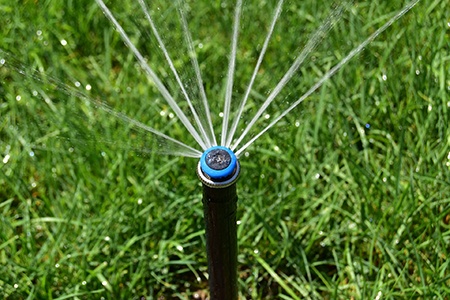
Shrub sprinklers, unlike pop-up sprinklers, remain in plain view regardless of whether they’re in use or not. These are designed to be installed on top of pipes above the ground.
These were commonly used to water shrubs, which is what earned them their moniker. However, these sprinkler heads are slowly becoming obsolete, used only in situations where options are extremely limited.
Additionally, due to their permanent presence above the ground, these sprinklers are trip hazards. They can also become damaged due to bumping into them, ending up in a situation where the sprinklers won't turn off or turn on.
Bubblers
Bubblers are useful when you want to flood a particular area with water. This makes them unsuited to lawn irrigation but suited to watering shrubs or groundcovers.
These sprinkler head types also come in especially handy in areas where sprinklers tend to over-spray water, among other specialty uses. Bubblers need level ground as they flood the entire area and are designed to have water gently bubbling out of them, preventing any soil erosion.
Flood Bubblers
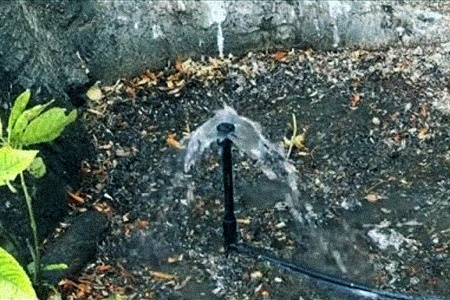
Bubblers come in various types, among them being flood bubblers. Flood bubblers, in turn, come in adjustable and non-adjustable variants; the former, essentially a small water valve, has a knob or screw to adjust the amount of water that flows out.
The water flow depends on how open the valve is. The latter, non-adjustable flood bubblers, have water flowing out of them at a fixed rate (the rate depends on which make you buy and from where, the most common being ¼, ½, 1 and 2 GPM).
One head is fixed at each shrub or between two. Apart from the non-adjustability, adjustable and non-adjustable bubbler types of sprinkler heads have no differences.
Stream Bubblers
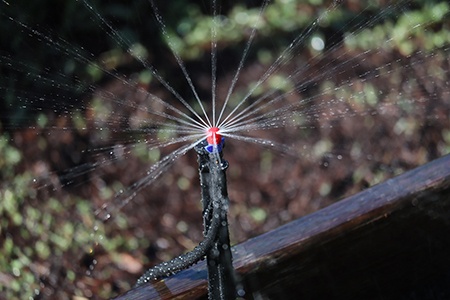
Stream bubblers are another type of bubbler, emitting narrow streams of water that reach between 2 and 5 feet from it.
These aren’t great for widespread flooding but are good for watering plants in the immediate surroundings. To prevent puddles and runoff, stream bubblers also need to be placed on level ground, as it is with other bubblers.
Micro Bubblers
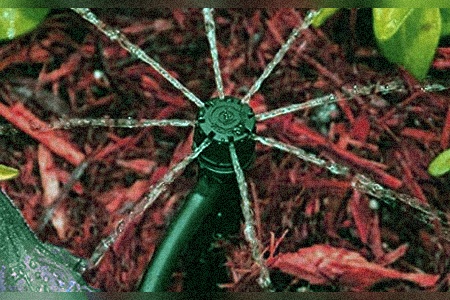
Micro-bubblers are often packaged and sold as adjustable flow-drip emitters and have a lower flow than their siblings. These bubblers come with barbs for easy installation on poly-drip tubing.
Micro-bubblers release over four gallons of water per hour—this is too little to make the device an actual bubbler but is substantial enough to create puddles and pools on the surface after the soil has absorbed the water.
Despite their adjustable flow, micro-bubbler types of sprinkler heads have too low a flow to be compatible with rotor or spray sprinklers and thus, shouldn’t be used on the same valve circuit.
Sprinkler Heads for Fire Protection
When it comes to fighting a fire, sprinkler heads are primarily of four different types—upright, pendent, concealed, and sidewall. Each sprinkler head comes in a range of sizes and finishes and is designed to activate at different temperatures.
Upright Sprinkler Heads
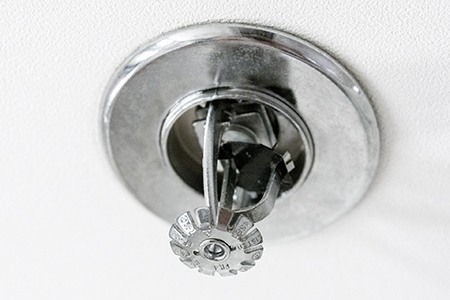
Upright fire sprinkler heads, as the name implies, are upright. These sprinkler heads point towards the ceiling, with deflectors that are curved down, enabling the water to spray in a downward hemispherical manner.
Upright sprinkler heads are most commonly used in rooms that are difficult to access or in mechanical rooms, as these sprinkler heads do a great job providing coverage between obstructions like air ducts and beams. Such sprinkler heads also provide a circular spray pattern.
Pendent Sprinkler Heads
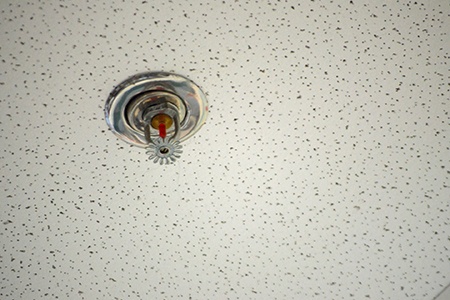
Though most of us may not know these by name, we definitely know them by sight. Pendent types of sprinkler heads are the most common fire-fighting sprinkler heads, finding usage in a range of buildings—factories, offices and hotels—across the country.
These sprinkler heads are suspended from the ceiling and when activated, spray water in a circular motion, ensuring that maximum ground is covered by the spray.
The head’s deflector is also curved down so that the water is directed in a cone-shaped position/manner.
Concealed Sprinkler Heads
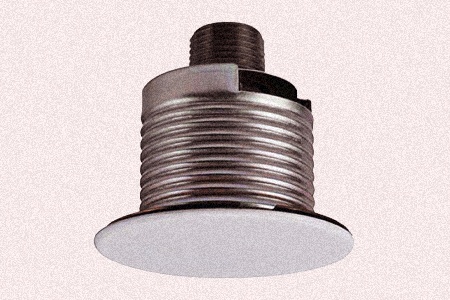
Concealed sprinkler head types are similar to pendent sprinkler heads, except that they’re, well, concealed. These sprinklers come with a cover plate that helps them blend into their surroundings (your ceiling, in this case).
This plate is designed to fall off the second your sprinkler detects a temperature in the air that’s 20 degrees less than its activation temperature so that it can kick itself into action as soon as it’s exposed to the fire and the heat.
Once the sprinkler is in activation mode, the head, which was earlier concealed, drops below the ceiling, spraying water in a circle to cover maximum ground.
Sidewall Sprinkler Heads
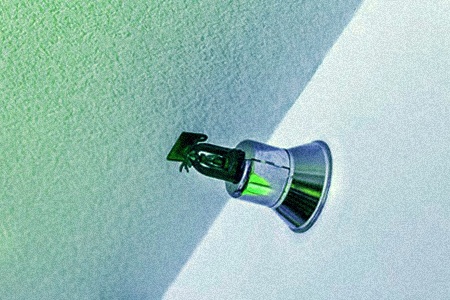
Sidewall sprinkler heads are great for small, tight, or cramped spaces, such as tiny rooms, hallways and corridors, or areas where sprinklers can’t be installed on the ceiling.
These sprinkler heads have only half a deflector, which means that the water sprays in a semi-circle shape and covers the whole area.
Sidewall sprinkler heads are generally installed in the wall that’s under or along a beam. On installation, the head stands out from the wall.
The first deflector sprays the water in the half-circle, while a second deflector works to keep the wall itself, where the sprinkler is installed, protected by spraying water back towards it.
Types of Sprinkler Heads for Every Need
Sprinklers are extremely handy to have around the house/building and hopefully, this article has laid clear your options. There’s a sprinkler head out there for each purpose, whether it’s to water your backyard or a bigger turf or to even prevent a fire.
So invest in any types of sprinkler heads today for a “sprinkling” of fun (we know you’re going to join the kids/pets in running through them!) and convenience and a whole lot of efficiency, safety and functionality.



